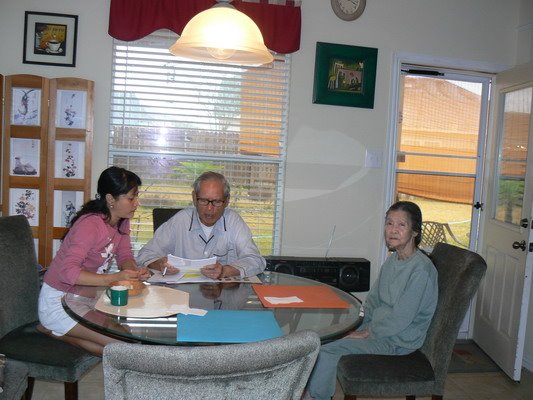May 13, 2015
JAPAN TOTAL WAR - Doãn Quốc Ti Nô - part 3
During World War II, Japan was completely focused on the state of total war. Every industry was focused on producing military assets. From simple airplane scopes to big warships that reached thousands of tons, Japan was trying to keep everything afloat, even when the war began to turn for the worse. For the military, Japan, like Germany, started out with the best position. They had completely surprised the Americans, seizing all of its Asian colonies in less than a year. Now, they were poised to invade down to Australia. They assembled a task force consisted of aircraft carriers, battleships, and many other warships. They had complete control of the air for their fighters could outperform anything the Americans could offer. Their infantries were battle hardened soldiers from earlier Asian campaigns. It seemed that it would a cake walk for the Japanese to steam roll over Western defenses near Australia. But at the battle of Coral Sea, they were checked, suffered casualties, and were forced to retreat. Determined to win fight another pitch naval battle, they sent another huge task force to Midway. But here, Japan would suffer its most devastating defeat yet in the war. All four of its fleet carriers were sunk, hundreds of airplanes were shot down, and thousands of experienced sailors and pilots perished with them. From here, things got even worse for Japan. The US had decided to launch 2 separate land campaign against Japan, while simultaneously unleashing its massive industrial power to cover all the material loses much faster than Japan could ever hope for. In India, Britain regained her strength and began to mount counter offenses into Burma. In China, Communist guerrilla fighters under Mao Ze Dong harassed Japanese land armies mercilessly. In Guadalcanal, Japan lost another large portion of its fleet to determined American assaults. Its land force could not hold back US marines as they began to pour into the island. The situation would repeat again and again when the used the island hoping strategy to overwhelm Japanese defenses following Guadalcanal. In the Solomon Islands and New Guinea campaigns, the US retook everything from Japan. The Japanese military could no longer match the quality and quantity of the US war machine. Thousands of men were lost on the side of Japan as they resorted down to frontal assaults against impenetrable US positions in the pacific. After losing Iwo Jima and Okinawa in two bloody campaigns, Japan faced a threat of invasion from the US. As the land war was raging, Japanese military merchant fleets were decimated by US submarine campaigns. Japan had no counter to US submarine since it had no radar or sonar technology. On the other hand, Japanese submarines had never been a serious threat against the US. They were easily countered and hunted down, just like their German counterparts in the Atlantic. In Asia, Japan lost Burma to Britain in 1944 and 1945, and its land army in China could go nowhere due to the threat of guerilla fighters. But these Asian campaigns became just sideshows as the US creep ever closer to Japan in the Pacific. In 1942, Japan was close enough for the US to use its massive air power to bomb Japan. Things escalated even further as the US began to use the new B-29 bombers against Japan. This new plane could fly higher, farther, and carry more bombs than any bombers in the war. The US began with high altitude bombing raid to avoid casualties from anti air fire. This operation proved to be ineffective because the bombs were not accurate enough to do sufficient damage. The US then turned to low altitude bombing, using incendiary instead of explosive. This proved to be devastated against Japan due to its wooden housing structure. Major Japanese cities like Osaka, Tokyo, and Kawasaki were nearly wiped out. And in 1945, the US would drop two nuclear bombs on Hiroshima and Nagasaki, thus ending the war.
Because of the policy of total war, civilian lives were also altered. Before the war, desperation drove the people of Japan into ultra-nationalism, creating a military government system that would come to dominate everything in their lives. During the Second Sino Japanese War, Japanese people was building up the notion of they were the protector of Asia from Western power. Months before the attack on Pearl Harbor, The government released a doctrine called “The Way Of Subjects.” It called for the extermination of evil Western influence like individualism, libertarianism, and materialism. Democracy and different parties system was abandoned for a single, strong, dictator government. It urged the Japanese people to sacrifice everything, like everyday goods and their lives, for the good of the Emperor. This was further exploited by the government as early successes in the Pacific War. A “Joint Declaration” was signed in 1943, condemning the exploits of Western powers in Asia. They stated that Japan was destined for greatness for driving out the Western invaders. Japanese propaganda machines were having the time of their lives with movies that would have made Josef Goebels proud. Pamphlets were created with image of Roosevelt and Churchill as barbaric demons devouring innocent Japanese civilians. But as the war progressed further, things became worse for Japan as its armies and navies were defeated on every front. The once proud military system of Japan was being reduced to rubble as the Allies were closing in on all sides. At home, Japanese citizens were asked to give more and more. Students were drafted at an ever younger age. In the 1944, the Japanese military began using kamikaze tactics against the US navies. Pilots would fly airplanes strapped with bombs and explosive into American ships, hoping to sink them, or at least killing a lot of US sailors in the process. Japanese desperately used frontal charges against US marines, only to be mowed down by machine guns and artillery fires. As Japan’s manpower was growing short, younger teens were being drafted into the army. Students were taught the basic functions of operating airplanes before being thrown into the battlefield against seasoned US airmen. Japanese people committed suicide en mass so that they would be captured by the Americans. Citizens learned that the US were the devils and would do horrible things to them should they be captured. In the battle of Saipan, over 1000 thousand people jumped down a cliff when the US marines took over the island. In Okinawa, People committed suicide by huddling around grenades or swallowing poison. At home, people were taught to strap bomb on their bodies and threw themselves under US tanks. Japanese citizens, including women and seniors, drilled with bamboo spears, hoping to kill as much Americans as they can. It was somewhat interesting to see that the Japanese government never did try to officially draft women into the army. They stated that the idea was too Western, and Japanese values were to be preserved. But women did become a huge portion in the work force, beside from younger teens. Things got even worse for the Japanese people as The US began its bombing campaign. Air shelters proved to be useless due to the sheer power and destructiveness of the US bombers. When the US started to use incendiary bombs against Japanese cities, thousands of people died and millions were left homeless. Food was growing unbearably short since everything was sacrifice to feed the Japanese military. Homes, fields, and factories were turned to ash due to the fire bombs, creating opportunities for black markets to thrive. Defeat was inevitable, and yet no one will know whether they truly wanted to fight on, or the Japanese government just forced everyone to go on. It took two atomic bombs to convince the Japanese government to surrender. By then, the people of Japan, like Germany, had suffered some of the most depressing chapter in WWII history.
Subscribe to:
Post Comments (Atom)



No comments:
Post a Comment